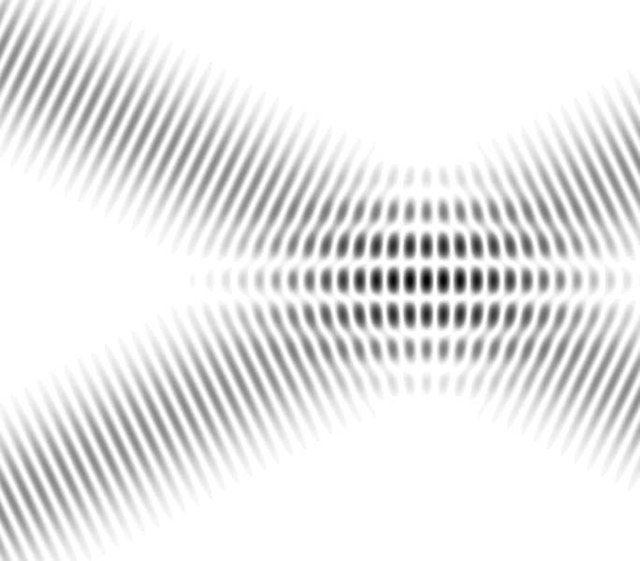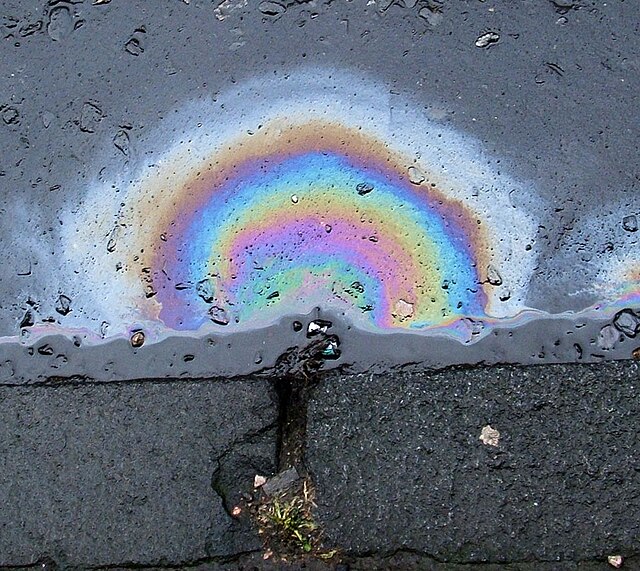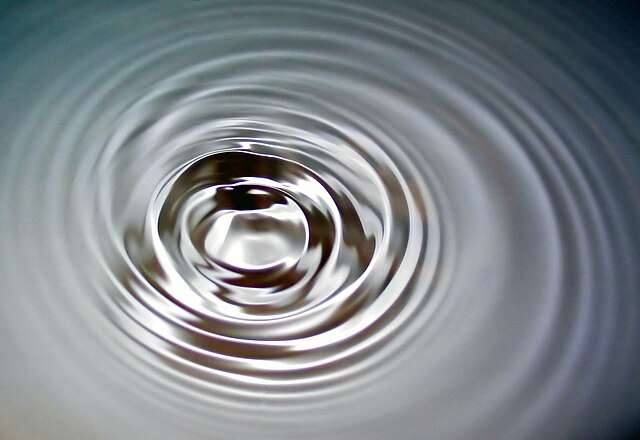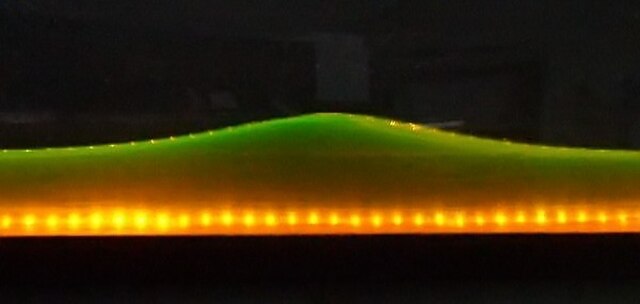In physics, interference is a phenomenon in which two coherent waves are combined by adding their intensities or displacements with due consideration for their phase difference. The resultant wave may have greater intensity or lower amplitude if the two waves are in phase or out of phase, respectively.
Interference effects can be observed with all types of waves, for example, light, radio, acoustic, surface water waves, gravity waves, or matter waves as well as in loudspeakers as electrical waves.
Photograph of 1.5cm x 1cm region of soap film under white light. Varying film thickness and viewing geometry determine which colours undergo constructive or destructive interference. Small bubbles significantly affect surrounding film thickness.
Interference fringes in overlapping plane waves
Smartphone with iridescent back panel
An oil spill
In physics, mathematics, engineering, and related fields, a wave is a propagating dynamic disturbance of one or more quantities. Periodic waves oscillate repeatedly about an equilibrium (resting) value at some frequency. When the entire waveform moves in one direction, it is said to be a travelling wave; by contrast, a pair of superimposed periodic waves traveling in opposite directions makes a standing wave. In a standing wave, the amplitude of vibration has nulls at some positions where the wave amplitude appears smaller or even zero. Waves are often described by a wave equation or a one-way wave equation for single wave propagation in a defined direction.
Surface waves in water showing water ripples
Solitary wave in a laboratory wave channel
Light beam exhibiting reflection, refraction, transmission and dispersion when encountering a prism







